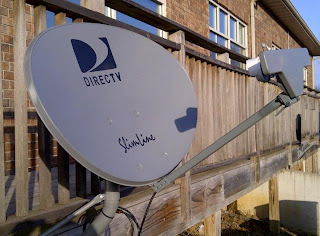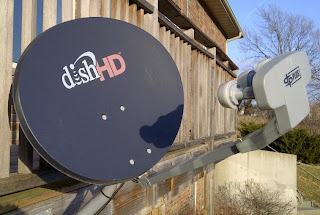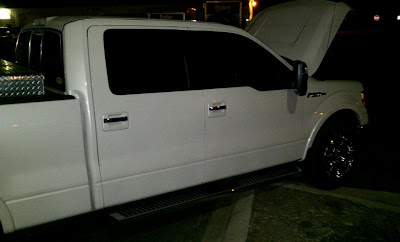New Blackberry: A Sneak Preview...
"The pen basically sees everything that you see using its forward-facing HD video camera, and hears everything that you hear using its integrated microphone. It records and analyzes the video and audio so that you can search for anything you have ever seen or heard."
 |
| Blackberry Cell Phone Image courtesy of Zuzu CC-BY-SA via WikimediaCommons |
It is the eve of the release of the BlackBerry Digital Pen. I don’t know what the BlackBerry Digital Pen will turn out to be, but I immediately thought of about 20 cool functions for a digital pen that will change the world. Today, I will write about what the BlackBerry Digital Pen could be. Tomorrow, we’ll find out what the BlackBerry Pen actually turns out to be…
Security Features
Since it’s a BlackBerry, business users will expect serious security features. The first is biometric access control. The pen knows its owner’s fingerprint and has in integrated sensor. Only the owner or those authorized by the owner can access data on the pen at all. The data on the pen in encrypted as well to ensure privacy for both business and personal information that may end up on the phone. You’ll see later why security features are so important.The owner can send commands to the pen from a web page (via a computer or cell phone). If the BlackBerry pen does get lost, the owner can send a command to clear the data on the pen remotely. Naturally, the owner can also command an upload of all data from the pen to secure storage in the cloud before clearing it.
 |
| Ink Pen Image courtesy of kangshutters at FreeDigitalPhotos.net |
Interfaces
The surface of the pen is a touch-screen LCD wrapped around the pen. It can display a few lines of text or some graphics to support a user interface. You can send and receive text messages. Text-to-speech voice recognition is the main input method for entering your outgoing text message. The phone can also display relevant information such as time, temperature, and stock quotes on its display. There would be an interface for at least entering digits- to dial the phone. Perhaps some sort of keyboard scheme could be accomplished by showing part of the keyboard at one time and scrolling to access the rest of the keys. There just isn't much real estate to work with on the surface of a pen.Connectivity
The pen supports Wi-Fi to upload its data to secure storage in the cloud. For convenience, the pen also has an integrated cell phone transceiver. Yes, you can also make cell phone voice calls and send/receive text messages with the BlackBerry pen. Bluetooth is also integrated to allow the pen to share its files conveniently with computers. For example you can use the pen like a memory stick to haul around large files like PowerPoint presentations or videos and then share selected files with a computer to share with others. The pen can also send a video stream to TVs via Bluetooth, or you can stream live video to the Internet via Wi-Fi or cellular link.The pen also has built-in infrared (IR) to allow it to function as a universal TV remote control. Of course it also has GPS so that it knows its location (and thus your location) at all times. This is also handy if it gets lost, it can let you know its location.
Pen Features
That’s right, it’s also a pen. It can write on normal paper. A good feature for a pen! It has integrated sensors so that it can 1) reproduce anything you write in a graphical format file and 2) use its on-board OCR to generate a text file of all text that you write. The sensor is likely a combination of digital video to obtain images of the written page, and motion sensors such as accelerometers built into the pen to determine its writing motion. Not only does it record what you write- it records what you write on as well. For example, if you fill out a form, the pen stores both the form and all of the information that you write on the form. It will also record the date, time, and location where you filled out the form. You can also retrieve the audio recording from the time when you were filling out the form.The pen also has a digital voice recorder with integrated text-to-speech. Also included are many of the features from Personal Digital Assistants (PDA’s) of the past, such as storing business contact information and keeping your schedule. The pen’s high resolution camera can be used to scan business cards and business documents. The pen uses its connectivity to automatically synch with the rest of your life and move its data to secure storage on the cloud as needed.
Sensors
The pen has a forward facing high definition (HD) video camera. When you place the pen in your shirt pocket, its HD video camera faces forward. This means you can use the pen as a sort of dashboard video recorder for your life. The pen can record a video of any meeting you are in. It can record the scene while you are driving or snowboarding, etc. Why would you want to record all of the events in your life? So you can search it later. The pen uses MIT’s new state-of-the-art FFT algorithm to compress the video files to the point where it can all be stored in the cloud. Face recognition algorithms and voice-to-speech algorithms automatically create a transcript of events that can be searched. Who was at the party? Where was I driving when I saw that cool recumbent bike for sale along the road?Not only that, but the camera records documents that you view. When you are looking at your computer screen , the pen is looking at your computer screen. It uses OCR so that any document you view can be found later. This works for paper documents as well if you have your pen on so that it can record them. The pen basically sees everything that you see in HD, and hears everything that you hear. It records and analyzes the video and audio so that you can search for anything you have ever seen or heard.
If you wish, the pen can automatically Tweet or update your facebook status: the pen "knows" where you are (GPS) and who you are with (calendar & face recognition).
You can see now why I listed Security Features first…
Recommended
reading:
Cell Phone Plans for Existing Cell Phones
How to Sell your Old Cell Phone and Get Cash
Cell Phone Plans for Existing Cell Phones
How to Sell your Old Cell Phone and Get Cash


























